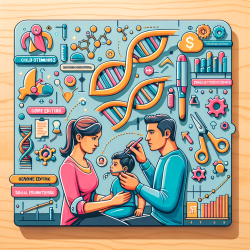As a practitioner dedicated to improving outcomes for children, staying abreast of the latest research is crucial. A recent study titled Language and reading impairments are associated with increased prevalence of non-right-handedness provides valuable insights that could inform your practice.
The study, conducted by Abbondanza et al. (2023), delves into the intriguing link between language and reading impairments and non-right-handedness (NRH). The research involved 2503 cases of individuals with language and/or reading impairments and 4316 sex-matched controls. The findings suggest that there is a significant association between NRH and language-related impairments.
Key Findings
- Individuals with language and reading impairments are more likely to be non-right-handed.
- The odds ratio (OR) for NRH in individuals with language/reading impairments compared to controls is 1.21, indicating a 21% higher likelihood.
- The study's large sample size and rigorous methodology lend credibility to these findings.
Implications for Practice
As a speech-language pathologist, understanding the connection between handedness and language impairments can enhance your assessment and intervention strategies. Here are some practical steps to consider:
1. Comprehensive Assessments
Include handedness as a factor in your assessments. While it shouldn't be the sole criterion, it can provide additional context for understanding a child's language and reading difficulties.
2. Tailored Interventions
Consider how handedness might influence a child's learning and interaction with language. Tailoring interventions to accommodate their handedness could potentially improve outcomes.
3. Further Research
The findings open up new avenues for research. You might consider participating in or initiating studies that explore the mechanisms behind the link between handedness and language impairments.
Encouraging Further Research
While this study provides robust evidence of a link between NRH and language impairments, the exact mechanisms remain unclear. Encouraging further research in this area can lead to more targeted and effective interventions. Here are some areas worth exploring:
- The neurological basis of the connection between handedness and language impairments.
- Longitudinal studies to track how handedness and language impairments co-develop over time.
- Interventions specifically designed for non-right-handed children with language impairments.
In conclusion, integrating these research findings into your practice can enhance your understanding and effectiveness as a speech-language pathologist. Staying informed and encouraging further research will contribute to better outcomes for the children you serve.
To read the original research paper, please follow this link: Language and reading impairments are associated with increased prevalence of non-right-handedness.










